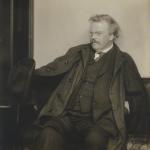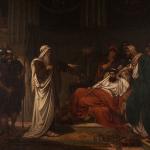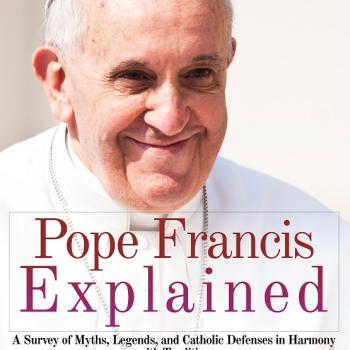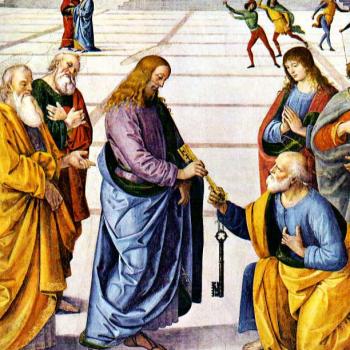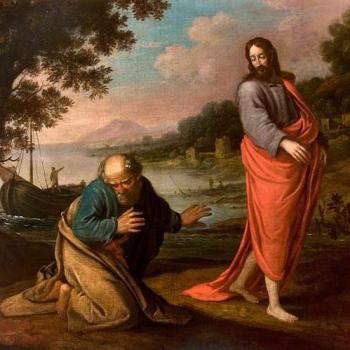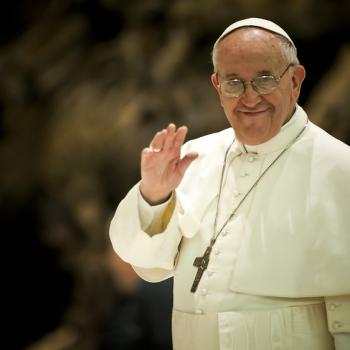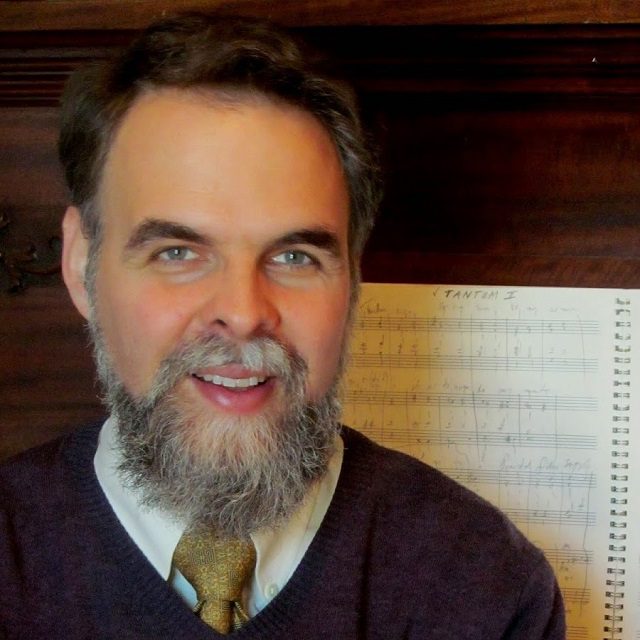
This article scrutinizes two-thirds of the signatories of the latest controversial (and in my opinion, disgraceful and scandalous) “Easter Letter” charging Pope Francis with heresy. Catholic apologist Jimmy Akin has written a strong critical article about it, and three follow-up pieces (one / two / three). Even strong papal critic Phil Lawler thinks it fails in its purpose, as does Canon lawyer Ed Condon in Catholic Herald: a venue known for its strong criticisms of Pope Francis as well, and canon lawyer Ed Peters.
Here I am specifically and exclusively interested in documenting radical Catholic reactionary [see my precise definition] leanings of thirteen of the 19 signatories (which is 68%). The other six signees may very well also be of this mindset, for all we know. I couldn’t find anything in standard searches. I examined similar past “anti-Francis” documents in this same “religious sociology” manner:
Radical Reactionary Affinities in “Filial Correction” Signatories [9-28-17]
Reactionary Influence: Correctio & June 2016 Criticism of the Pope [10-3-17; expanded on 1-24-18]
Readers may draw their own conclusions about the sort of semi-schismatic, pick-and-choose mentalities and mindsets that have been exhibited by the present papal critics and bashers, and how it might affect their judgment.
1) Fr. Thomas Crean was a signatory (as was reactionary Chris Ferrara) to the document, “A Statement of Reservations Concerning the Impending Beatification of Pope John Paul II” (The Remnant Newspaper, 3-21-11). It contains statements like: “throughout John Paul’s long pontificate faithful Catholics were bewildered and scandalized by numerous manifestly imprudent papal statements and gestures the likes of which the Church has never witnessed in 2000 years.” / “[E]very one of John Paul’s predecessors would have been shocked and dismayed by the disastrously widespread disobedience, doctrinal dissent, liturgical decay, moral scandals, and declining Mass attendance that continued to the end of his pontificate – all exacerbated by frequently poor episcopal appointments and the sorts of highly questionable papal words and deeds we have recalled above.” / “No blessed or sainted Pope in Church history has a legacy as troubling as that of John Paul II, and perhaps no Pope at all aside from Paul VI.”
2) Deacon Nick Donnelly is a regular columnist at the pathetic reactionary site One Peter Five (ten articles listed). The sedevacantist site Novus Ordo Watch noted about him in an article (complete with screenshot): “For years Donnelly ran his Twitter account under the handle @ProtectThePope, yet a few days ago, on July 17, he notified his followers that he was changing his Twitter name from @ProtectThePope to @ProtectTheFaith.” He also has 33 articles listed at Michael Voris’ reactionary organization, Church Militant. Michael Voris claimed that Pope Benedict XVI exaggerated his illness in order to allow for an “immoral” resignation.
He has attacked Pope St. John Paul II and associated him with the alleged heresies of Pope Francis: “Pope John Paul II’s Assisi syncretist jamboree gives Francis the excuse for this travesty. Just as JPII’s unilateral change to the Catechism over the death penalty gives Francis the ‘mandate’ to change it at will. Francis is exploiting every mistake made by Pope John Paul.” (Twitter, 9-18-18)
3) Fr. John Hunwicke is anti-Vatican II. He wrote on his own blog (9-19-17): “Clearly, we have now definitively (irreversibly?) moved out of the dark shadow of Vatican II. ” He wrote (2-17-07): “Vatican II, like so many of its predecessor councils, is obsolete or, at the very least, obsolescent.”
4) Dr. John Lamont signed the piece published by the reactionary luminaries at The Remnant, questioning the beatification of Pope St. John Paul II. He’s an “equal opportunity” pope-basher. In another article at the notoriously reactionary Rorate Caeli (5-11-15) he goes after Vatican II advocates, decrying those “who wish to apply a ‘hermeneutic of continuity’ to Vatican II, or who deny that there can be any opposition or rupture between the documents of that council and Catholic tradition, or who claim that the assertion that the authentic teachings of Vatican II formally contradict the tradition of the Church is false”. This , too, was praised and passed along at One Peter Five.
What instead leaps to the attention in the current situation is precisely the underlying doctrinal deformation that, as skillful as it may be in evading directly heterodox formulations, still maneuvers in a coherent way to carry forward an attack not only against particular dogmas like the indissolubility of marriage and the objectivity of the moral law, but even against the very concept of right doctrine, and with it, of the very person of Christ as Logos. The first victim of this doctrinal deformation is precisely the pope, who I hazard to conjecture is hardly aware of this, a victim of a generalized epochal alienation from Tradition, in large segments of theological teaching; after him, there are innumerable victims who fall into deception. . . .
In another Rorate Caeli article (11-3-16), the rather imaginative professor makes the claim that the situation today is analogous to the Arian crisis in the early Church (which heresy denied that Jesus was God).
6) Dr. Anna Silvas wrote in an extreme, absurd article, “A Year After Amoris Laetitia. A Timely Word” (4-21-17):
Now, in the few short years of Pope Francis’ pontificate, the stale and musty spirit of the seventies has resurged, bringing with it seven other demons. And if we were in any doubt about this before, Amoris Laetitia and its aftermath in the past year make it perfectly clear that this is our crisis. That this alien spirit appears to have finally swallowed up the See of Peter, dragging ever widening cohorts of compliant higher church leadership into its net, is its most dismaying, and indeed shocking aspect to many of us, the Catholic lay faithful. I look up at any number of higher prelates, bishops and theologians, and I cannot detect in them, by all that is holy, the least level of the sensus fidelium—and these are bearers of the Church’s teaching office? . . .*But I think ‘the spirit’ to which Francis so soothingly alludes, has more to do with the Geist of Herr Hegel, than with the Holy Spirit of whom our blessed Lord speaks, the Spirit of Truth whom the world cannot receive, because it neither sees him nor knows him (Jn 14:17). The Hegelian Geist on the other hand, manifests itself in the midst of contradictions and oppositions, surmounting them in a new synthesis, without eliminating the polarities or reducing one to the other. This is the gnostic spirit of the cult of modernity. . . .*When I hear those who lecture us that Pope Francis is the voice of the Holy Spirit in the Church today, I do not know whether to laugh at the naivety of it, or weep at the damage being done to immortal souls. I would say that yes, Francis is the agent of a spirit, namely the Hegelian Geist of ‘modernity’ very much at work in the Church.
7) I have myself dialogued with Dr. Peter Kwasniewski. I defended Pope Benedict XVI and the “reform of the reform” (of the liturgy). He opposed both. He makes a frontal attack on Vatican II, Pope St. John XXIII, Pope St. Paul VI, Pope St. John Paul II, and Pope Benedict XVI in his article, “RIP, Vatican II Catholicism (1962-2018)”: scandalously and outrageously published at One Peter Five:
I was once one of those Talmudic scholars who attempted to square every circle in the sixteen documents of the Council. I praised their textual orthodoxy and lamented their neglect or distortion at the hands of hijackers. I knew that the loyal Catholic mentality always began its sentences “if only…”: “If only the new liturgy were properly celebrated…”; “If only the new catechism were widely taught…”; “If only people everywhere could just follow the lead of the great Polish pope” (and later, “the great German pope”).
That’s where I used to live. I have since moved on to a bigger and more beautiful dwelling called traditional Catholicism. I was tired of living in the newly built, supposedly more energy-efficient and environmentally sound but in reality flimsy, drafty, fluorescent, insect-infested, falling-apart building produced by the only ecumenical council that made no solemn definitions and issued no solemn condemnations. I came to see, . . . that the hijackers were not the ones after the Council, but the ones inside the Council who cleverly steered it toward the progressivism and modernism they secretly longed for, deliberately planting “time bombs” throughout the documents – ambiguous phrases that could be turned this way or that, and which were turned this way and that in the neverending turf war between liberals and “conservatives” of every stripe, at every level. . . .
For a long time, I thought John Paul II and Benedict XVI were fighting the good fight against this revolutionary reinterpretation of Christianity, but after a few high-profile interreligious meetings, osculations of the Koran, book-length interviews with dialectical answers to every question, and other such indicators, I lost my enthusiasm for them as pastors, whatever I might have admired in their philosophical or theological writings (which, however you slice it, are not the primary job of a pope). It was a shock to the system to realize that these popes, though undoubtedly well intentioned, were swimming in a lake of Kool-Aid rather than the ocean of Tradition – the only difference being that they were strong enough to keep swimming and occasionally cry out to heaven for help, instead of drowning and sinking to the bottom like a millstone with a cardinal tied around its neck.
The last five years are not a sudden catastrophe that came from nowhere; they are the orange juice concentrate of the past fifty years, the last act in a tragedy that has been escalating to this point. Bergoglio is the distillation of all the worst tendencies in Roncalli, Montini, Wojtyła, and Ratzinger, without any of their redeeming qualities. Francis’s predecessors were conflicted and inconsistent progressives; he is a convicted modernist.
8) Professor Matteo d’Amico was a member of SSPX in 2005. I believe he may be a member still, according to several Italian sites, where it was not exactly clear, but “FSSPX” keeps showing up in searches of his name.
9) Maria Guarini “Maria Guarini’s ultra-traditionalist blog ‘Chiesa e Postconcilio’ publishes titles such as: ‘If the next Pope is Bergoglian, the Vatican will become a Cathomasonic branch.’ ” [link] Anyone can see how reactionary she is by visiting her blog and selecting the English translation option. She published on her blog, for example, an article by Fr. Albert Kallio (6-26-18) which contended that Vatican II espoused a collegiality which he falsely equates with heretical medieval conciliarism (basically, the primacy of councils over the pope): a doctrine which was “new and contradicted a belief and a centuries-old practice of the Church” and “contradict[ed] the previous magisterium.”
10) With Dr. Robert Hickson we get more of the good old-fashioned heterodox / semi-schismatic reactionary hostility to Vatican II: which, as Cardinal Ratzinger made clear in 1985, has the same exact authority as the Council of Trent. Maike Hickson wrote about her husband at the radical reactionary site One Peter Five on 8 January 2018:
My husband – then [in 1985] a Professor and Head of the Literature Department at Christendom College – challenged Mr. Lawler (as well as Christendom Philosophy Professor Russell Hittinger) – and with it the Council – concerning some of its problematic aspects. He then questioned whether the College effectively wished to “preserve the revolution of the Second Vatican Council,” and he added that he believed that parts of the teaching of the Council cannot be reconciled with the Church’s tradition, especially about religious liberty, syncretism, and indifferentism, and about grace, a sincere but erroneous conscience, and about the very nature of the Church (de Ecclesia).
11) Brian M. McCall bashes and lies about Pope Benedict XVI, Vatican II, and the ordinary form of the Roman Rite Mass (three of the four classic hallmarks of reactionaryism):
Unless Benedict XVI is claiming that the Council Father John Paul II is not part of the Council of the Fathers but rather the Council of the Media, the destruction of the Church’s hierarchical structure by collegiality and the People of God is not the work of this supposed Council imposter but rather is in harmony with the letter and the spirit of the Council of the Fathers. . . .
[I]t was not the media but Paul VI, Archbishop Bugnini, the various bishops conferences, the Congregation for Divine Worship and the document which enabled them all, the Constitution on the Liturgy, which wrought this destruction of the Roman Rite.
It is always easier to blame a scapegoat. It allows you to avoid the real evidence. It is even easier when the real culprit is a friend, or protégé. Pope Benedict was one of the midwives who gave birth to the historical real documented Second Vatican Council and it is much easier to blame the big bad media than one’s beloved child. Have no despair; notwithstanding the continual downward spiral of the Church in all areas of measurement, the real Council is finally emerging says Pope Benedict, with a smile of hope for his priests “50 years later, the strength of the real Council has been revealed. [when would that be?] Our task for the Year of Faith is to bring the real Second Vatican Council to life [but I thought it already has been revealed?].”
You see the “real Council” is finally after all these long years showing its true self. “The real strength of the Council was present and slowly it has emerged and is becoming the real power which is also true reform, true renewal of the Church.” But it was the documents of the real Council that authorized and encouraged the prayer meeting at Assisi, the New Mass, the bureaucratic tyranny of bishops’ conferences, the appointment of women chancellors of diocese, etc., etc. What Pope Benedict evidently cannot accept, even after two years of detailed documentation presented in the doctrinal discussions with the Society of St. Pius X, is that it was the documents of the real Council that contained the time bombs whose shrapnel is now imbedded [sic] all over our Church in crisis. The media and journalists only reported, with glee and celebration, what the Council said and what the popes following it implemented in its name. The last fifty years is simply the natural consequence of the ideas and expressions issued by the Council. It is this hard truth which the retiring Council Theological Expert does not want to hear. It seems he is willing to keep the unjust internal exile of the SSPX in place, notwithstanding an apparently strong personal desire to end the injustice, because he will not face the terrible crisis that was the Second Vatican Council.
All we can do is pray that God permits the next pope to be someone who is not a man of the Council, but who is willing to call a spade a spade and tell the media: Away with this robber Council; we are going back to Tradition. (“Will the Real Second Vatican Council Please Stand up!”, The Remnant, 2-15-13)
12) Prof. Paolo Pasqualucci is profoundly against Vatican II as well, which was triumphantly proclaimed on One Vader, er Peter Five (” ‘Points of Rupture’ of the Second Vatican Council with the Tradition of the Church – A Synopsis”: 4-13-18):
It has become an inevitability that in our attempts to understand the current crisis in the Church, we must look back upon the events that precipitated it. There is perhaps no more debated topic in this regard than the question of whether the Second Vatican Council was unjustly marred by a poor implementation and interpretation — the ill-defined and often reckless so-called “Spirit of Vatican II” — or was in itself problematic and thus formative in bringing us to the present ecclesiastical moment. What is beyond dispute, however, is that the council did, in one way or another, play a pivotal role in the digression of contemporary Catholicism from the longstanding traditions — liturgical, sacramental, and doctrinal — of the perennial Church.
Today, we present an analysis by Paolo Pasqualucci, a Catholic philosopher and retired professor of philosophy of the law at the University of Perugia, Italy. Pasqualucci identifies, in this adaptation of the introduction to his book Unam Sanctam – A Study on Doctrinal Deviations in the Catholic Church of the 21st Century, 26 distinct points of rupture with the Tradition of the Church in the texts of the Vatican II documents themselves.
I regard this papacy as a disaster and Bergoglio as possibly — because of his tampering with established doctrine — as possibly the worst pope we have ever had. . . .*The whole thing amounts to a heresy on the scale of the Arian heresy. That took some 60 years to work out. I fear that this set of moral heresies may last even longer. (“Scholar stumps Cardinal Cupich, asks if Pope’s ‘paradigm shift’ means ‘radical’ doctrinal change,” Dorothy Cummings McLean, LifeSite News, 2-15-18)
It’s an awful lot more than just Pope Francis and his supposed heresy or evil intent that these people oppose, isn’t it? That’s exactly my point, and I hope that you will take it to heart, and place this latest tragic document into its larger context of Protestant- and liberal Catholic-like reactionary chaos and rebellion: not coming from Pope Francis, but rather (and ironically) from these extreme semi-schismatic reactionaries.
***
***


